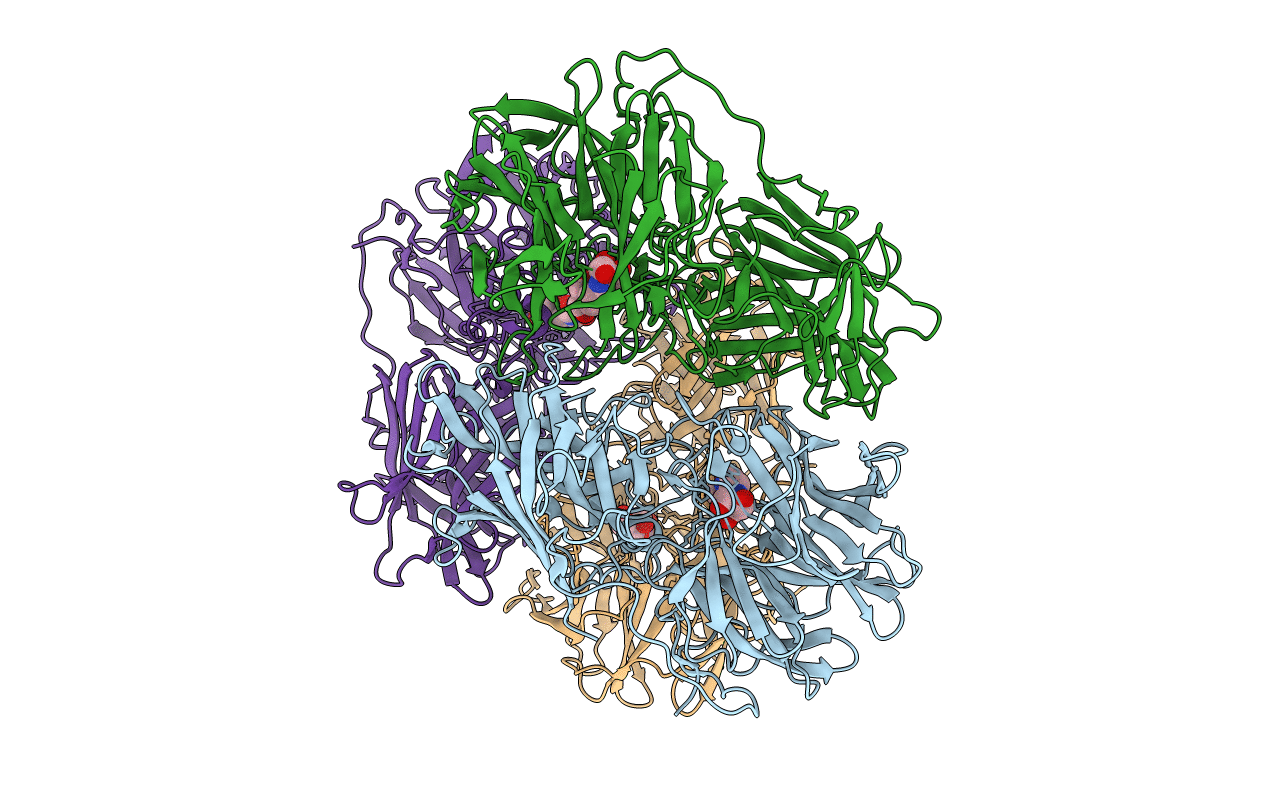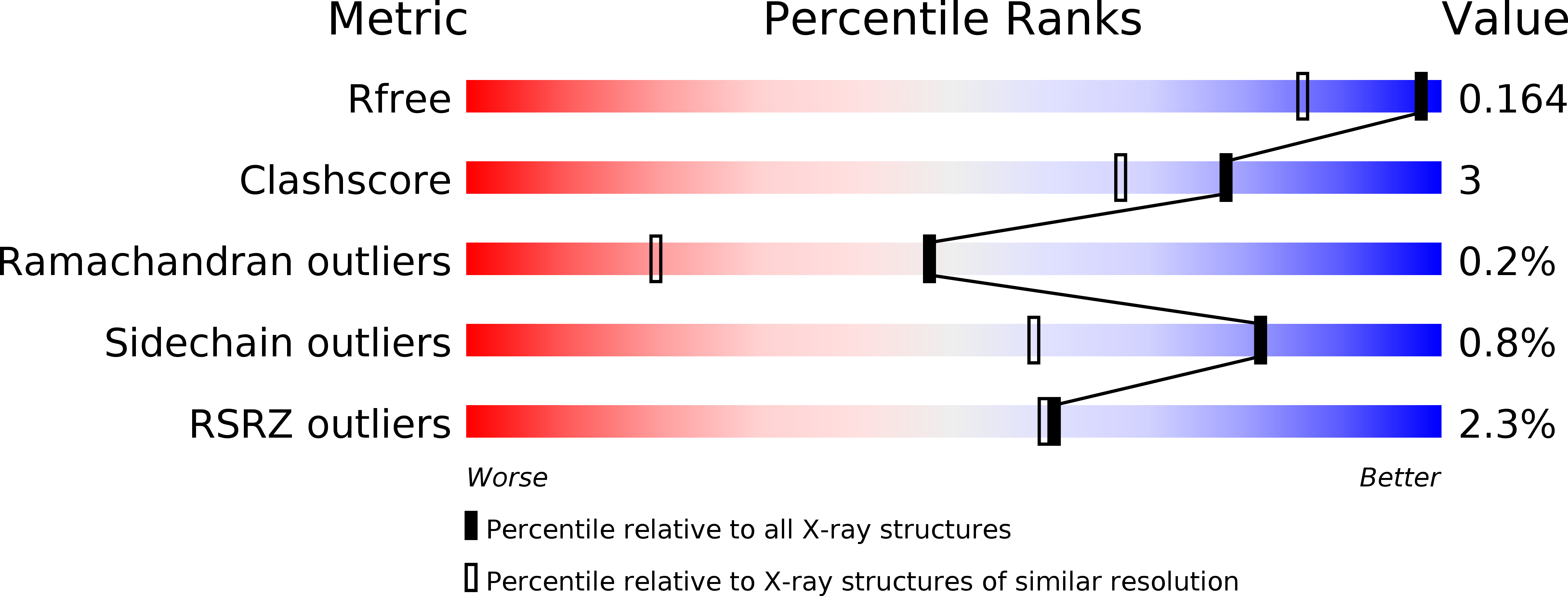
Deposition Date
2008-01-25
Release Date
2008-04-22
Last Version Date
2024-02-21
Entry Detail
PDB ID:
3C2U
Keywords:
Title:
Structure of the two subsite D-xylosidase from Selenomonas ruminantium in complex with 1,3-bis[tris(hydroxymethyl)methylamino]propane
Biological Source:
Source Organism:
Selenomonas ruminantium (Taxon ID: 971)
Host Organism:
Method Details:
Experimental Method:
Resolution:
1.30 Å
R-Value Free:
0.16
R-Value Work:
0.13
R-Value Observed:
0.13
Space Group:
P 1


